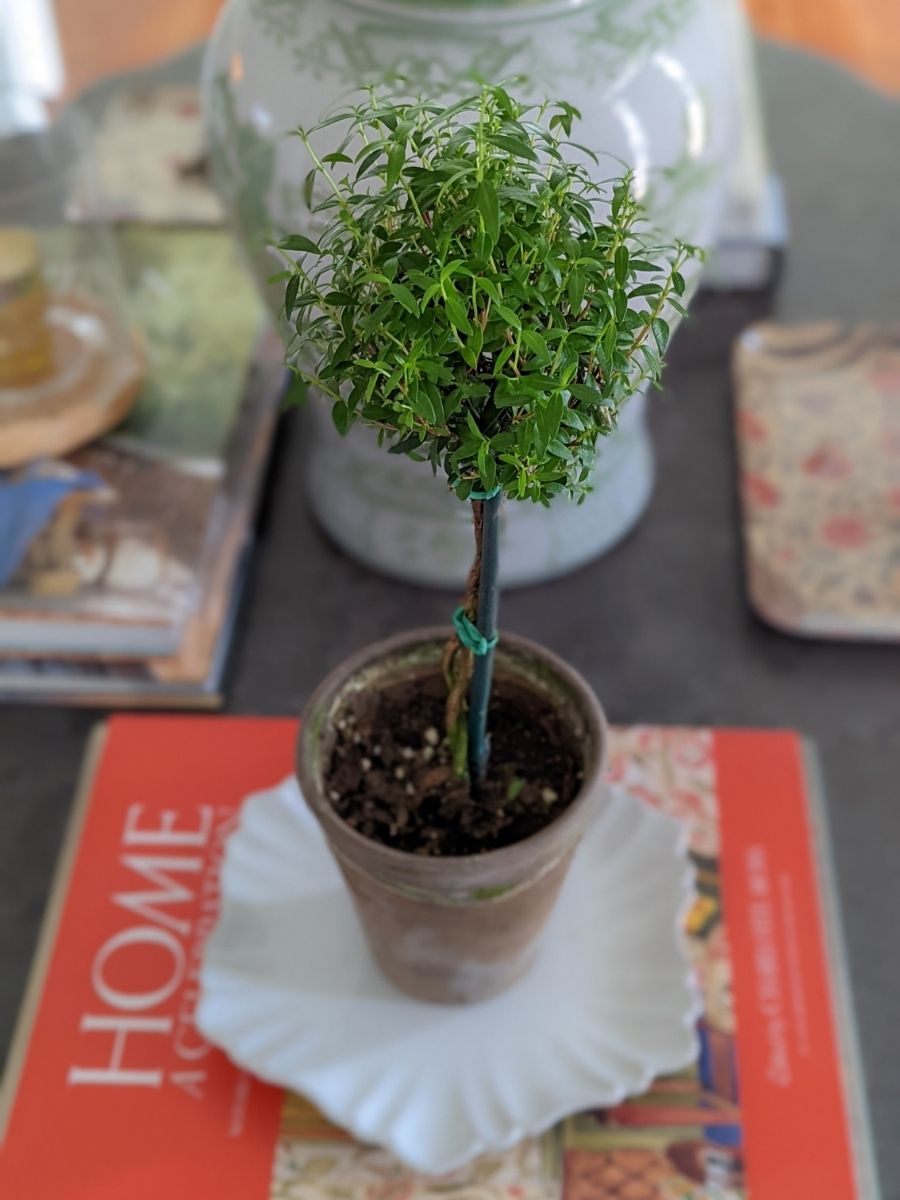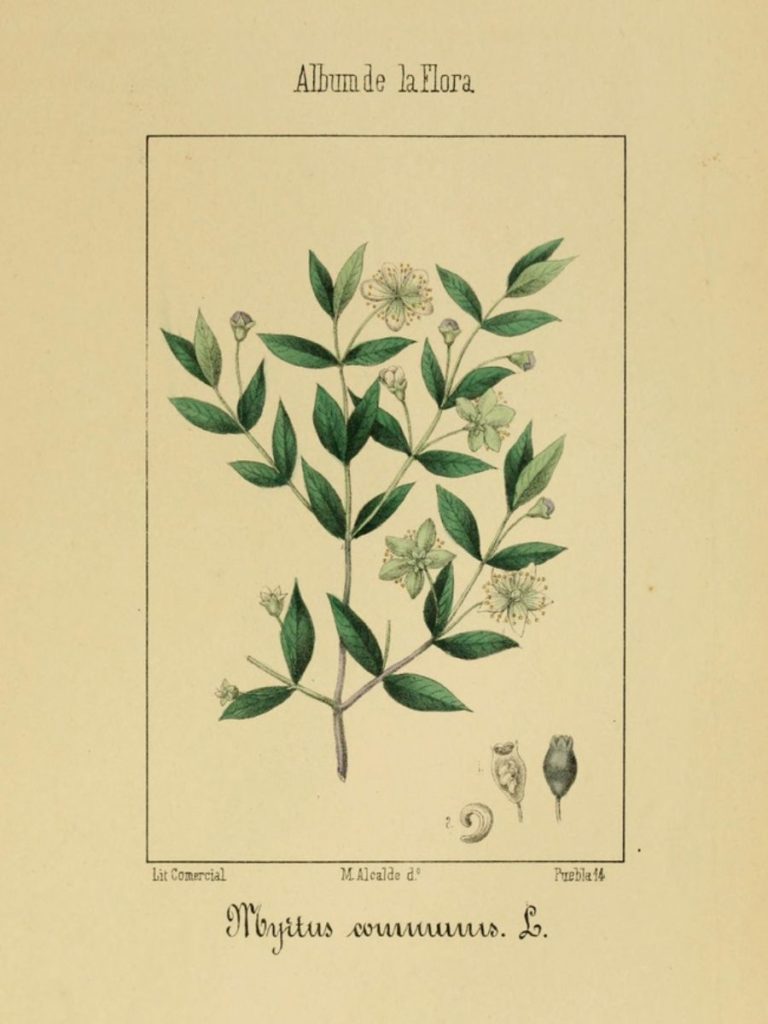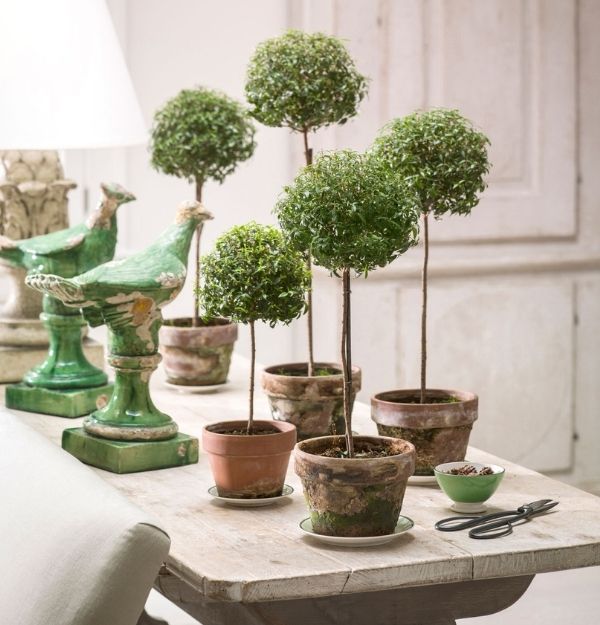
When I mentioned my plans to write about myrtle topiary for this post my husband quipped, “you mean how to kill them?” It’s true that I’ve cycled through a few topiary over the years. But despite my brown thumb tendencies, these finicky plants remain a favorite of mine.


As a traditionalist at heart, I’d say the potted myrtle reigns as the most classic of houseplants. Even the Greeks and Romans favored the Myrtos and Myrtus, attributing the plant to the goddesses Demeter and Aphrodite. I learned all about myrtle’s ancient roots (and a few other tidbits concerning its connection to Royal weddings) when reading this Smithsonian article, which delves into the plant’s provenance and meaning. The elegant myrtle has a long history, having been cultivated in parts of Europe and Asia since the Middle Ages. To this day, gardens surrounding Spain’s Alhambra Palace contain specimens that date back hundreds of years. As someone who has struggled to keep myrtle going for more than a few months, I found this astonishing!

Despite past fails with the temperamental topiary, I’ve given in to the urge to try again. Springtime has me wanting to start anew and bring even more green into our home with fresh flowers and plants. A simple potted myrtle by the kitchen sink or atop a stack of books looks lovely on its own, or consider a grouping for a dramatic statement like the ones below.
In case you’re also drawn to myrtle’s classic elegance, I’ve decided to share some research on how to keep your topiary alive and well. Read on for a few tips that experts insist make all the difference, along with more stunning displays that have me motivated to work on my green thumb!



Tips to Keep Your Myrtle Topiary Thriving:
- Water frequently to avoid letting your myrtle get too dry. Once the soil dries out, it can be nearly impossible to revive a myrtle. Keeping the soil consistently moist is crucial.
- Ensure your myrtle receives bright light, either outside during warmer seasons or inside near a sunny window (preferably with south/west exposure). To promote symmetrical growth, rotate your plant each week.
- Treat your myrtle to liquid fertilizer once a month during the growing season (March – September).
- Clip wayward shoots to prune your myrtle and maintain shape. Be sure to avoid shearing or cutting the leaves, which can damage the plant.





If you’ve had success with myrtle topiary, we’d love hear your advice in the comments!

